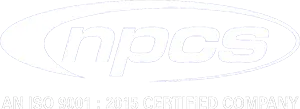Information
Cement Manufacturing Plant, Detailed Project Report, Profile, Business Plan, Industry Trends, Market Research, Survey, Manufacturing Process, Machinery, Raw Materials, Feasibility Study, Investment Opportunities, Cost and Revenue, Plant Economics
Cement Manufacturing Plant, Detailed Project Report, Profile, Business Plan, Industry Trends, Market Research, Survey, Manufacturing Process, Machinery, Raw Materials, Feasibility Study, Investment Opportunities, Cost and Revenue, Plant Economics, Production Schedule, Working Capital Requirement, Plant Layout, Process Flow Sheet, Cost of Project, Projected Balance Sheets, Profitability Ratios, Break Even Analysis
Cement is a material with adhesive and cohesive properties which make it capable of bonding minerals fragments into a compact whole. It can be defined as any substance, which can join unite two or more pieces of some other substance together to form a unit mass. It is an inorganic, non-metallic substance with hydraulic binding properties, and is used as a bonding agent in building materials. It is a fine powder, usually gray in color that consists of a mixture of the hydraulic cement minerals to which one or more forms of calcium sulfate have been added. Mixed with water it forms a paste, which hardens due to formation of cement mineral hydrates. Cement is the binding agent in concrete, which is a combination of cement, mineral aggregates and water. Concrete is a key building material for a variety of applications.
Cement, as used in construction industries, which when mixed with water and allowed to set and harden can join different components or members together to give a mechanically strong structure. Thus cement can be used as bonding material for bricks or for bonding solid particles of different sizes (rubber masonry) to form a monolith.
The most common use for cement is in the production of concrete. Concrete is a composite material consisting of aggregate (gravel and sand), cement, and water. As a construction material, concrete can be cast in almost any shape desired, and once hardened, can become a structural (load bearing) element.
Indian cement industry, a leading manufacturing sub-sector in India, entered a new era after the partial decontrol in 1982 and near total free market in 1989, ahead of the dawn of the liberalisation era in the country. The industry was totally delicensed in 1991 under the Industries Development and Regulation Act. India is the second largest producer of cement in the world after China. It is followed by Japan and the USA. As a whole it is a good project for entrepreneurs to invest.
See more
1. Project Location
1.1. District Profile & Geotechnical Site Characterization
1.1.1.Geography
1.1.2.Divisions
1.1.3.Demographics
1.1.4.Map
1.1.5.Transport
1.1.6.Airport
2. Introduction
2.1. Ordinary Portland Cement
3. Uses & Applications
3.1. 33 Grade Ordinary Portland Cement
3.2. 43 & 53 Grade Ordinary Portland Cement
4. Constituents & Composition of Ordinary Portland Cement
4.1. Minor Compounds
5. Properties of Cement
5.1. Physical Properties:
5.2. Chemical Properties:
6. B.I.S. Specification
6.1. Quality Control
6.2. IS. 269-1976 Ordinary & low heat Portland cement (third revision) (with amendments No. 1 to 5)
6.3. IS. 10693 Limits for emission of particulate matter from cement plants.
6.4. IS. 12002 Control of air pollution in cement Plants. Portland cement (third revision)
7. Market Survey
7.1. Cement
7.2. Market Structure
7.3. Market Brands
7.4. White Cement
7.5. Leading Brands
7.6. Market Structure
7.7. Market Size
7.8. Investments
7.9. Government Initiatives
8. Financials & Comparison of Major Indian Players/Companies
8.1. About Financial Statements of CMIE Database
8.2. Profits & Appropriations
8.3. Total Liabilities
8.4. Total Assets
8.5. Net Cash Flow from Operating Activities
8.6. Section – I
8.6.1.Name of Company with Contact Details
8.6.2.Name of Director(S)
8.6.3.Plant Capacity
8.6.4.Location of Plant
8.6.5.Name of Raw Material(S) Consumed With Quantity & Cost
8.7. Section – II
8.7.1.Assets
8.7.2.Cash Flow
8.7.3.Cost as % Ge of Sales
8.7.4.Forex Transaction
8.7.5.Growth in Assets & Liabilities
8.7.6.Growth in Income & Expenditure
8.7.7.Income & Expenditure
8.7.8.Liabilities
8.7.9.Liquidity Ratios
8.7.10.Profitability Ratio
8.7.11.Profits
8.7.12.Return Ratios
8.7.13.Structure of Assets & Liabilities (%)
8.7.14.Working Capital & Turnover Ratios
9. Export & Import Statistics Data of India
9.1. Export Statistics Data
9.2. Import Statistics Data
10. Present Manufacturers
11. Types of Cement
11.1.Ordinary Portland Cement
11.2.Portland Blast Furnace Slop Cement
12. Raw Materials & Its Preparation
13. Methods of Cement Manufacturing
13.1.Pyro-Processing
13.2.Wet Process Kilns
14. Phases Formed in Portland Cements
15. Other Phases in Portland and Special Cements
16. Manufacturing Process
16.1.Process Description
17. Process Flow Diagram
18. Role of Laboratory
19. Environmental Implications
19.1.Dust emissions
20. List of Machinery and Their Specification
21. Buyer’s List
21.1.Contact Details of Buyer’s
21.2.Name of Director(S)
21.3.Plant Capacity
21.4.Location of Plant
21.5.Company Wise Consumption Detail of the Raw Materials
22. Plant & Machinery Suppliers
23. Suppliers of Raw Materials
24. Plant Layout
25. Machinery, Raw Material & Product Photographs
25.1.Machinery Photographs
25.2.Raw Material Photographs
25.3.Product Photographs
26. Quotation of Plant, Machinery and Equipments from Supplier
PROJECT FINANCIALS
· Project at a Glance
Annexure
· Assumptions for Profitability workings ….…………………………………………....................... 1
· Plant Economics…………………………………………………………………………….................... 2
· Production Schedule……………………………………………………………………….................... 3
· Land & Building…………………………………………………………………………….................... 4
§ Factory Land & Building
§ Site Development Expenses
· Plant & Machinery………………………………………………………………………….................... 5
§ Indigenous Machineries
§ Other Machineries (Miscellaneous, Laboratory etc.)
· Other Fixed Assets………………………………………………………………………….................... 6
§ Furniture & Fixtures
§ Pre-operative and Preliminary Expenses
§ Technical Knowhow
§ Provision of Contingencies
· Working Capital Requirement Per Month………………………………………………................. 7
§ Raw Material
§ Packing Material
§ Lab & ETP Chemical Cost
§ Consumable Store
· Overheads Required Per Month and Per Annum ……………………………………................. .8
§ Utilities & Overheads (Power, Water and Fuel Expenses etc.)
§ Royalty and Other Charges
§ Selling and Distribution Expenses
· Salary and Wages ……………………………………………………………………………................. 9
· Turnover Per Annum ………………………………………………………………………................ 10
· Share Capital…………………………………………………………………………………................ 11
§ Equity Capital
§ Preference Share Capital
• Annexure 1 :: Cost of Project and Means of Finance
• Annexure 2 :: Profitability and Net Cash Accruals
§ Revenue/Income/Realisation
§ Expenses/Cost of Products/Services/Items
§ Gross Profit
§ Financial Charges
§ Total Cost of Sales
§ Net Profit After Taxes
§ Net Cash Accruals
• Annexure 3 :: Assessment of Working Capital requirements
§ Current Assets
§ Gross Working Capital
§ Current Liabilities
§ Net Working Capital
§ Working Note for Calculation of Work-in-process
• Annexure 4 :: Sources and Disposition of Funds
• Annexure 5 :: Projected Balance Sheets
§ ROI (Average of Fixed Assets)
§ RONW (Average of Share Capital)
§ ROI (Average of Total Assets)
• Annexure 6 :: Profitability ratios
§ D.S.C.R
§ Earnings Per Share (EPS)
§ Debt Equity Ratio
• Annexure 7 :: Break-Even Analysis
§ Variable Cost & Expenses
§ Semi-Variable/Semi-Fixed Expenses
§ Profit Volume Ratio (PVR)
§ Fixed Expenses / Cost
§ B.E.P
• Annexure 8 to 11 :: Sensitivity Analysis-Price/Volume
§ Resultant N.P.B.T
§ Resultant D.S.C.R
§ Resultant PV Ratio
§ Resultant DER
§ Resultant ROI
§ Resultant BEP
• Annexure 12 :: Shareholding Pattern and Stake Status
§ Equity Capital
§ Preference Share Capital
• Annexure 13 :: Quantitative Details-Output/Sales/Stocks
§ Determined Capacity P.A of Products/Services
§ Achievable Efficiency/Yield % of Products/Services/Items
§ Net Usable Load/Capacity of Products/Services/Items
§ Expected Sales/ Revenue/ Income of Products/ Services/ Items
• Annexure 14 :: Product wise domestic Sales Realisation
• Annexure 15 :: Total Raw Material Cost
• Annexure 16 :: Raw Material Cost per unit
• Annexure 17 :: Total Lab & ETP Chemical Cost
• Annexure 18 :: Consumables, Store etc.
• Annexure 19 :: Packing Material Cost
• Annexure 20 :: Packing Material Cost Per Unit
• Annexure 21 :: Employees Expenses
• Annexure 22 :: Fuel Expenses
• Annexure 23 :: Power/Electricity Expenses
• Annexure 24 :: Royalty & Other Charges
• Annexure 25 :: Repairs & Maintenance Expenses
• Annexure 26 :: Other Manufacturing Expenses
• Annexure 27 :: Administration Expenses
• Annexure 28 :: Selling Expenses
• Annexure 29 :: Depreciation Charges – as per Books (Total)
• Annexure 30 :: Depreciation Charges – as per Books (P & M)
• Annexure 31 :: Depreciation Charges - as per IT Act WDV (Total)
• Annexure 32 :: Depreciation Charges - as per IT Act WDV (P & M)
• Annexure 33 :: Interest and Repayment - Term Loans
• Annexure 34 :: Tax on Profits
• Annexure 35 :: Projected Pay-Back Period And IRR
X
Have a business idea? Let’s make it
happen together-contact us now!




